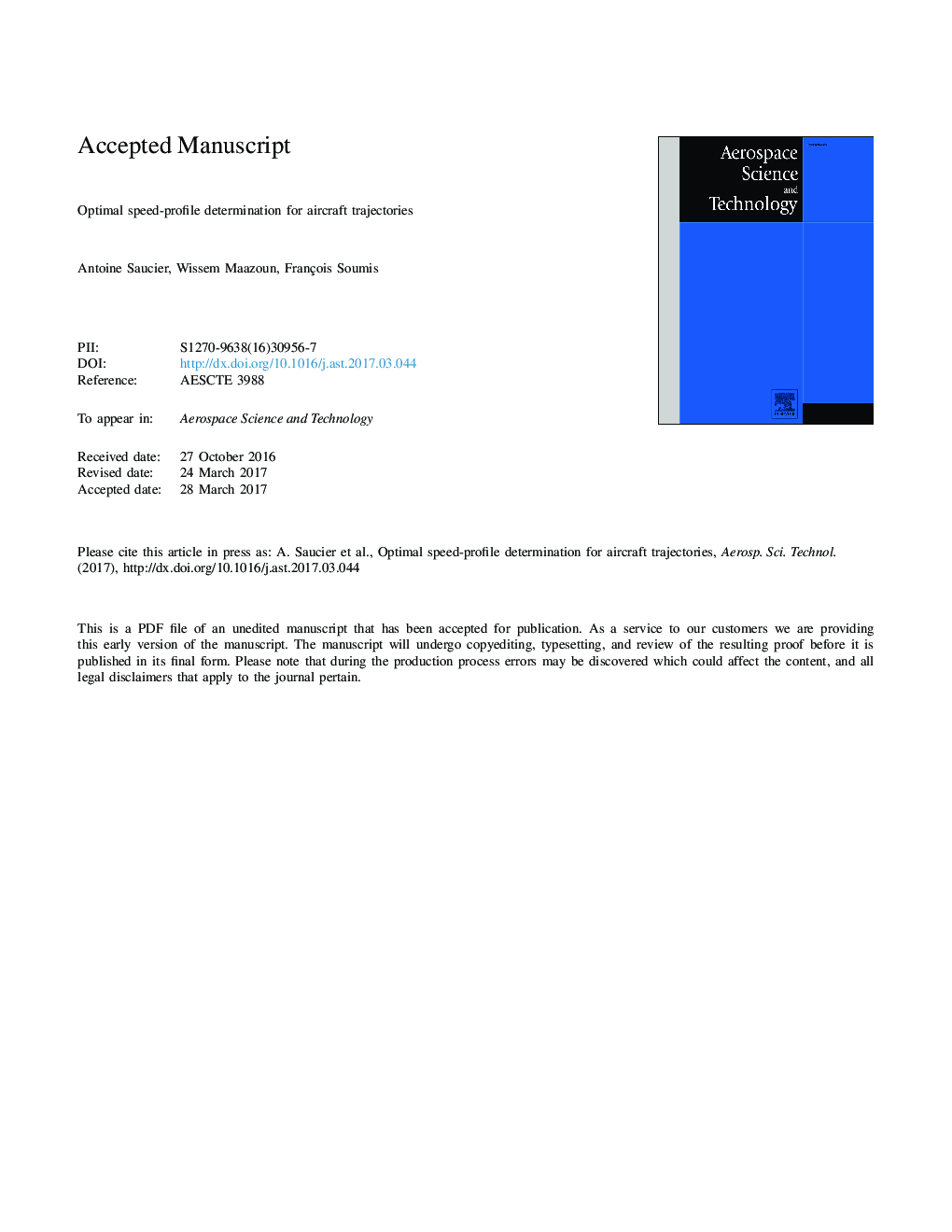| Article ID | Journal | Published Year | Pages | File Type |
|---|---|---|---|---|
| 5472812 | Aerospace Science and Technology | 2017 | 40 Pages |
Abstract
The aircraft trajectory optimization problem can be approached by first considering a large set of possible spatial aircraft trajectories that connect a departure point and an arrival point. For each spatial trajectory in this set, the minimization of the total flight cost leads unavoidably to the problem of selecting a minimal-cost speed-profile, also called optimal speed-profile (OSP). Once the OSP is known for each spatial trajectory, the optimal trajectory is simply the lowest-cost trajectory in the trajectory set, assuming that each trajectory is covered with the OSP. The determination of the OSP for a given spatial trajectory is a fundamental problem that must be resolved to find the optimal trajectory. In this paper, we define the speed-profile optimization problem. If the fuel consumption function is smooth and strictly convex, then we show that using a cost-index to account for the cost of time is equivalent to fixing the total travel-time in the optimization problem. We derive the optimality conditions of the OSP for constant altitude trajectories, both for the continuous problem and for a discretized version of the same problem. The analysis of these conditions reveals the relationship between the OSP and the locally-optimal speed-profile (LOSP), which is the speed profile that maximizes the specific range locally: for zero cost-index, the OSP and the LOSP are identical; for positive cost-index, speeds are higher on the OSP than on the LOSP. To compare quantitatively the OSP with the LOSP, we propose a first method to compute the OSP for constant altitude trajectories. The resulting numerical experiments reveal that the OSP uses more fuel but reaches destination sooner, which results in a small reduction of the direct operating cost. The magnitude of the cost savings associated with the OSP appears to be negligible in practice. We conclude that the LOSP is a good approximation of the OSP for constant altitude trajectories.
Related Topics
Physical Sciences and Engineering
Engineering
Aerospace Engineering
Authors
Antoine Saucier, Wissem Maazoun, François Soumis,
